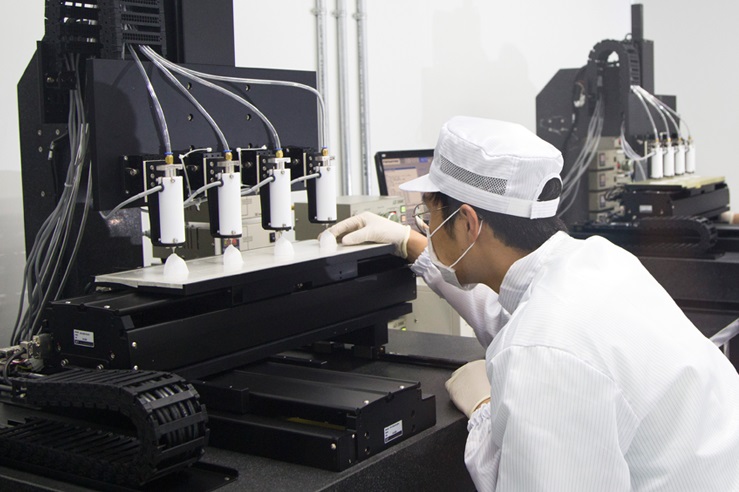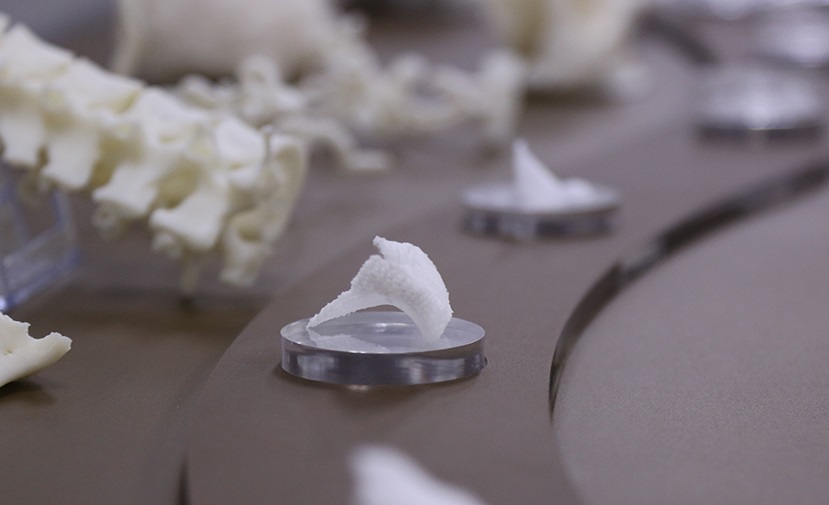China3D printingNet, August 28, South Korean pharmaceutical company HK inno.N announced plans to use labor3D printingSkin tests for new autoimmune and dermatological drugs.
HK inno.N and3D bioprintingThe company T&R Biofab cooperates and plans to manufacture a series of artificialskin, The two companies will use3D printingofskinIn-depth research on the effectiveness of various dermatological drugs. If the evaluation is successful, the additional organization can be used as a future substitute for animal testing in the medical and cosmetic industries.
“We will not only use artificial skin to verify the efficacy of drugs in treating skin diseases, but also conduct active research between the two companies in order to apply it to research on healthy functional foods and cosmetic materials,” Koh Dong-Hong Kong Innovation Research Director Hyun said in the “Korea IT Times”.

3D bioprinting
Technology to make human skin” alt=”HK inno.N has cooperated with T&R Biofab to use its
3D bioprinting
Technology to make human skin” width=”620″ height=”413″ />
HK inno.N has cooperated with T&R Biofab to use its3D bioprintingTechnology to make human skin. Picture from T&R Biofab.
T&R Biofab3D bioprintingtechnology
T&R Biofab is headquartered in Seoul, South Korea and was established by Pohang University of Science and Technology (POSTECH) in 2013.Using their joint expertise, the researchers obtained their3D bioprintingTechnology patents, and established a venture company to commercialize its additive products.
In the past seven years, the company has carried out extensive tissue regeneration research and designed medical equipment for orthopedics, orthopedics and dentistry. T&R is also developing its patented deCelluid bio-ink, which is reportedly capable of creating an outer cell membrane (ECM) and bioprinting tissue-specific skin, liver, bone or cartilage tissue.
In April 2019, T&R Biofab obtained the3D bioprintingTechnology patents. The company’s additive manufacturing technology involves the use of porous 3D structures to make the dermis and epidermis of skin cells.2019 yearIn the second half of the year, T&R further improved its method and developed a new multi-nozzle bioprinting system that enables it to create complex cell structures in a shorter period of time.
With the advancement of T&R technology, this pharmaceutical company has established many partnerships to expand its scope of application. T&R cooperates with other biotechnology business SCM Life Science and is researching and developing a series of3D printingOf cell patch products, including new formulations for cell therapy.
In May 2020, the company was selected by the Korean Ministry of Health, Labour and Welfare to lead the commercialization of stem cells and regenerative medicine. According to reports, the project has a budget of 825 million won to study the response of stem cell-derived human heart cells when exposed to experimental drugs. Now, a transaction has been signed with HK Inno. N, T&R Biofab will use its bioprinting expertise to test the effects of dermatological drugs.

3D printing
Technology to manufacture implants for various surgical procedures” alt=” T&R Biofab has deployed its
3D printing
Technology to manufacture implants for various surgical operations” width=”620″ height=”378″ />
T&R Biofab has deployed its3D printingTechnology to manufacture implants for various surgical operations. Picture from Biofab.
In order to start the research project immediately, HK Inno. N, formerly CJ Healthcare, signed a Memorandum of Understanding (MoU) with T&R Biofab on August 25, 2020.The agreement revolves around “using3D bioprintingArtificial skin evaluation drugs and functional materials” have developed a joint research and development plan.
During the joint research period, HK Inno.N plans to deploy T&R Biofab3D bioprintingTechnology to manufacture structures that function similar to actual skin. According to reports, T&R’s skin tone model can measure characteristics such as skin elasticity, aging index and protein expression. 3D printingThe artificial skin can also be customized according to the precise needs of HK inno.N, and allows the company to find more effective ways to test experimental drugs.
Overall, by deploying T&R’s bioprinting expertise, HK Inno. N aims to develop new skin treatments for patients suffering from autoimmune diseases. T&R Biofab CEO Yoon Won-soo said that the cooperation between the two companies may be further extended to research involving health functional foods and cosmetic materials.
Yoon Won-soo said in a statement: “The cooperation with HK Inno.N will be3D printingThis is a meaningful step towards the full commercialization of skin and related drug screening technologies. We will complete innovative products that can be effectively used in industrial sites such as cosmetics and new drug development. “
Continue to study3D bioprintingorganization
Developed for3D printingThe optimized bio-ink for tissue scaffolds is currently one of the most popular research topics in the field of additive manufacturing, and many researchers are developing their own formulations.Engineers from Rutgers University in New Jersey have worked3D printingThe stent is designed with a new type of customizable bio-ink. The gel is composed of hyaluronic acid and polyethylene glycol, which can be customized after mixing with other inks to produce various human tissues.
Researchers at the University of Witwatersrand in South Africa assessed the existing3D printingThe safety and efficiency of bio-inks. Scientists have discovered that a new type of bio-ink needs to be developed in order to be able to adopt multi-cell bioprinting on a larger scale.
The research team of ETH Zurich has created the Universal Nano-Carrier Ink (UNI) platform, which can produce new bio-functional inks. By incorporating polymers into its UNI formulation, the Zurich team was able to create many more stable, stronger scaffolds through secondary crosslinking.
China3D printingNet compile article!
(Editor in charge: admin)


0 Comments for “Korean pharmaceutical company plans to use 3D printed skin to test new dermatological drugs”